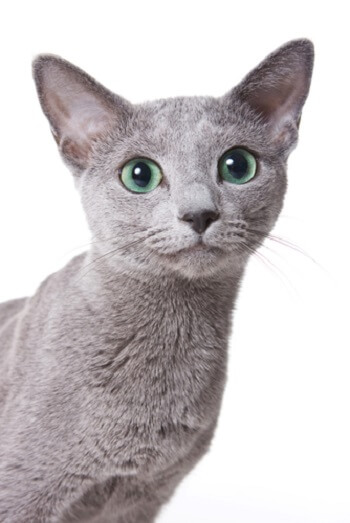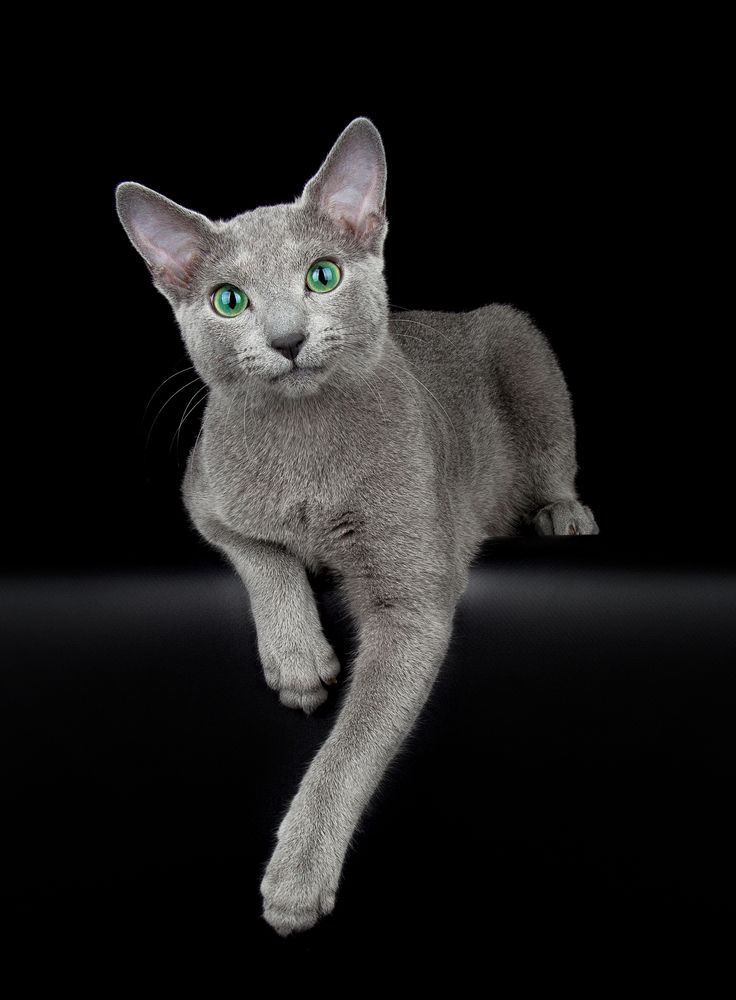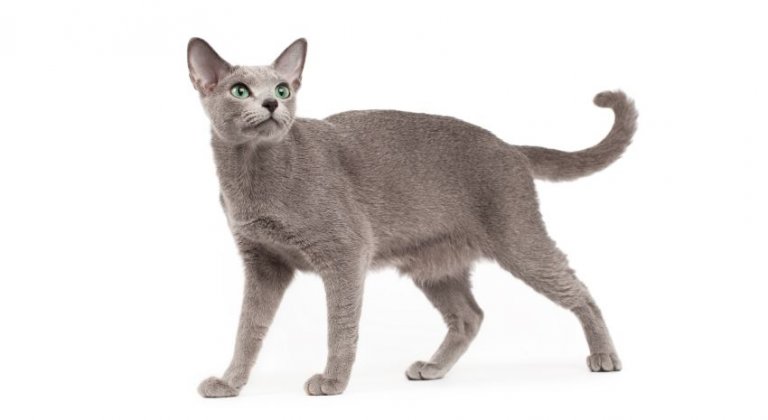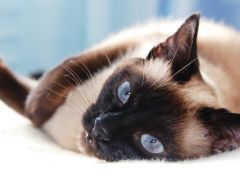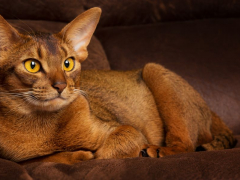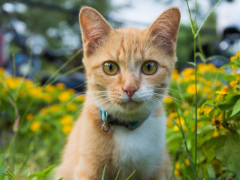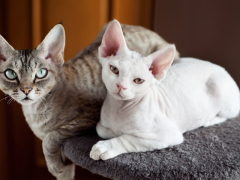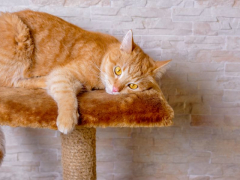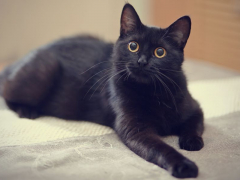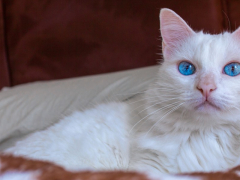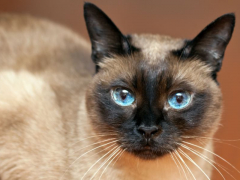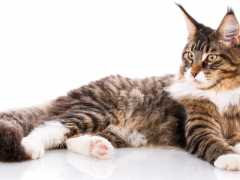Personality and Temperament
With its soft, silky, short coat in silvery blue-gray, the Russian Blue cat is stunning to behold, but this breed is also a marvelous companion. Affectionate and loyal, Russian Blues happily accompany their family members around the house, though they can be shy when strangers visit.
The Russian Blue isn't much of a mischief maker. Like any breed, these cats might get into things during their kitten years, but once you've gently taught them which surfaces are theirs to sit on and which should be left alone, the Russian Blue will generally stick to approved areas.
Russian Blue cats are highly intelligent and capable of learning many tasks, such as playing fetch, coming when called, and more. Many also learn to open doors—something to keep in mind when trying to keep a cat out of a certain room or cupboard! Because they can be shy and reserved, Russian Blue cats do not typically take to leash training. They are far happier sticking to known quantities and spending time with their families.
If you bring a Russian Blue into your home, you'll have a steadfast companion with a fondness for daily routines and gentle cuddles, along with a fairly strong opinion about everything that takes place in the household. While their families are away at work, these cats will happily nap instead of looking for ways to get into trouble. They do learn to get along with other pets and they can appreciate respectful children, but they don't need constant companionship.
Beautiful, fairly self-sufficient, and friendly with people they come to trust, Russian Blues make well-rounded pets and fit easily into a variety of living situations.
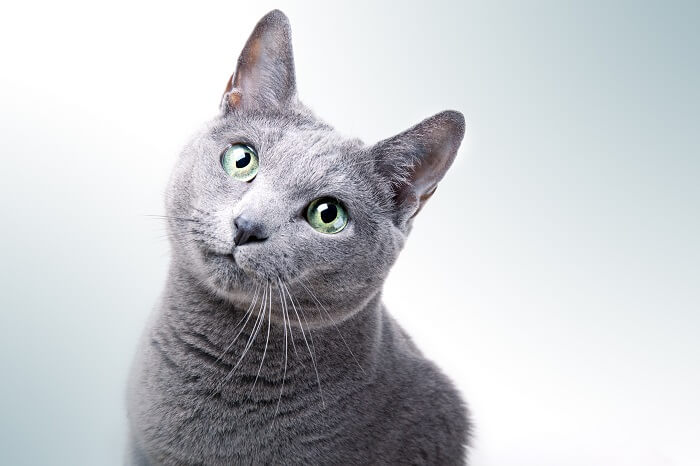
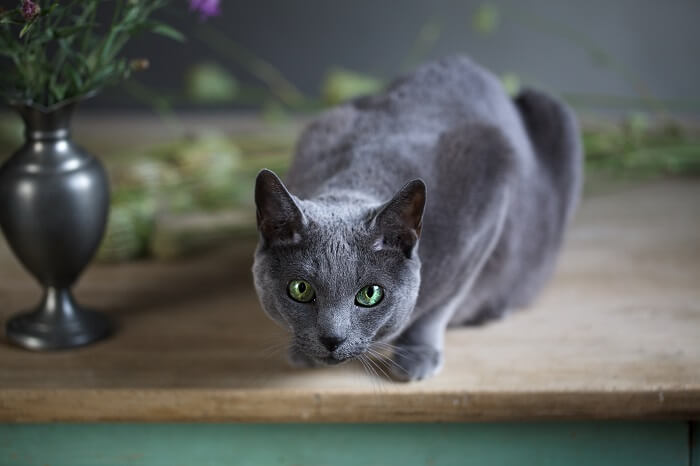
Care
Nutrition
Grooming
Exercise
Health
The Russian Blue has no special nutritional needs. However, high-quality diet is important for the health of all cats. Fresh food is an excellent choice and high-protein, low-carbohydrate commercial foods that incorporate real fish or real meat as the main ingredient are preferable to high-carbohydrate diets that can contribute to obesity.
Thanks to its short, easy-care coat, the Russian Blue cat doesn't require much help in the grooming department. These cats benefit from a weekly brushing, which helps remove loose hair and cuts back on shedding.
Brushing your cat's teeth daily with a pet-safe toothpaste and toothbrush is the best way to prevent dental disease, and regular nail trimming will keep the nails in good condition.
Even though Russian Blue cats are renowned for their dignified nature, they do have a playful streak. These cats have plenty of fun with toys they can enjoy on their own as well as interactive toys like feathered wands and lasers. In addition, they appreciate a multilevel cat tower, particularly if it has compartments for sleeping and hiding. Scratching posts are essential as well.
Since the Russian Blue is a naturally occurring breed, most Russian Blues enjoy good health. These cats can be prone to some of the same feline diseases that affect other cats, including hypertrophic cardiomyopathy, kidney disease, obesity, and periodontal disease.
History
With its incredible silvery-gray coloration, you might think that the Russian Blue cat was carefully developed by feline geneticists, but the truth is, this is a naturally occurring breed. Believed to originate in Russia's Archangel Isles around the port of Arkhangelsk, these cats probably accompanied sailors to Northern Europe and Great Britain during the 1860s. The first Archangel Cat was shown at London's Crystal Palace in 1875 and ever since then, these amazing cats have been highly coveted.
The Russian Blue was shown alongside all other blue cats until it was given its own show class in 1912. Following the second world war, the Russian Blue experienced a population collapse as so many cat breeds did at that time. Breeders, mostly in Scandinavia and England, worked to bring numbers back up.
Once these cats reached the shores of the United States, breeders allowed British Russian Blue and Scandinavian Russian Blue cat bloodlines to mingle. At the same time, Russian Blue cats have contributed to the creation of other breeds including the Nebelung, which is sometimes called the long-haired Russian Blue. The Havana Brown was also developed with the help of Russian Blues, and some Oriental Shorthairs carry Russian Blue DNA as well.
Russian Blue cats are recognized by cat breed associations all over the world, including the Cat Fanciers' Association (CFA) and The International Cat Association (TICA).
